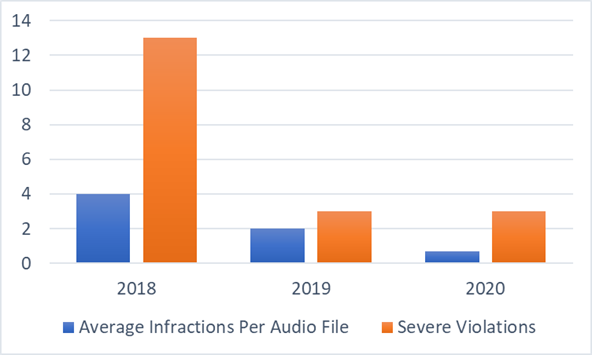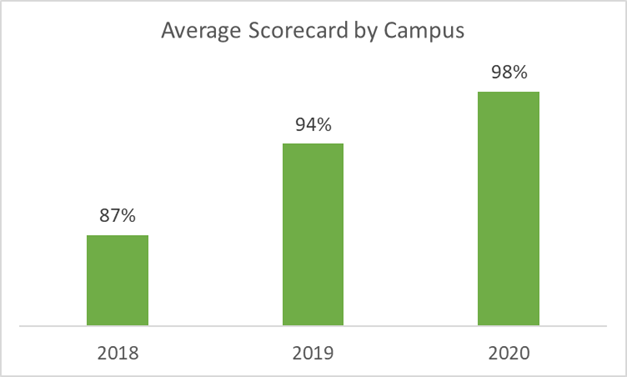Case Study: Higher Education Audio Monitoring
IntegriShield Audio Monitoring Capabilities
The opportunity for anyone to abuse and exploit consumers without a company’s knowledge puts businesses at risk. IntegriShield was created out of the need to protect our clients and their industries. Our services uncover violations so companies can quickly address issues. Each business comes with different objectives and needs. We create custom audio monitoring programs to match the needs of our partners. IntegriShield’s technology ,in conjunction with a dedicated service team will provide any company with the ability to manage a task which otherwise would be costly and time consuming.
Our Approach and Technology
IntegriShield’s audio monitoring is the most effective way to identify violations. We customize our process to meet the operational challenges you face. Quickly identify risky violations and missed opportunities using speech-to-text technology. Speech-to-text monitoring is often used to manage high volumes and quick scoring to manage quality control. If your organization is looking for advanced risk mitigation with detailed scoring of hard to identify issues, manual audio review is the solution for you. Accuracy is a valued aspect of the process. We have checks and balances in place to remove false positives before they reach your team.
A Case Study
Client A has a multi-campus college. Their goal is to reduce the risk of admissions violations during on campus and virtual student interviews. Client A records virtual phone conversations and in-person meetings on campus.
A custom scorecard with 31 points was developed which included categories to address training issues and violations putting the school at risk. The average audio time audited each month is 20% of the total audio by campus and by admissions representative to ensure all representatives are monitored monthly.

In year one, Client A began with an average of 4 violations per file audited and an average campus scorecard rate of 87%. There were 13 severe violations resulting in corrective actions. In year two, we optimized the scorecard criteria to target specific issues needing attention. The scorecard in year two had 33 points. Each point was also assigned a priority to enhance the school’s coaching program. It included severe violations, warnings, coaching and training. These categories allowed admissions leadership to address training in both a group format and individually when coaching or warnings were necessary.
In year two, Client A saw an average of two violations per file audited which was down 50% year over year. Campus scorecards rates averaged 94%, up 7% from the year prior. And severe violations resulting in corrective actions were down to three, which was a 78% reduction. We met with Client A monthly to review findings. Each meeting looking for opportunities to address each point being scored. As part of the process, we began compiling a representative month-over-month report to show progress by rep. We also implemented a report to assist admissions leadership with warnings and coaching. The report included all the file data along with time stamps and the language used resulting in the violation. This allowed leadership to quickly address issues month to month, leading to the improvement in results year over year.

In year three, Client A saw an average of .7 violations per file audited which was down 65% year over year. Campus scorecard rates averaged 98%, up 4% from the year prior. Actions were at three again which was the same year over year. Year three presented unique challenges with all admissions representatives going remote. Within the first month of the change, the scorecard criteria were adjusted to represent a higher volume of virtual audio more accurately. Virtual interviews took about one-third the time of in-person interviews, so the percentage of files was increased by representative.
The service provided to Client A would typically take five specialized staff members to complete in an average month. By outsourcing, Client A has reduced the cost to what would be two staff members. The improvement in admissions has not only reduced the school’s risk, but the client has reported an increase in enrollments year over year.
Commitment
It is our belief both technology and manual processes are critical to providing the best outcomes for our partners. Based on our experience, not all violations are blatant. Our team will work with you to customize a plan to meet your needs and budget. We are committed to offering a custom solution and to developing a unique granular approach unlike any in the industry. Thank you for this opportunity.








